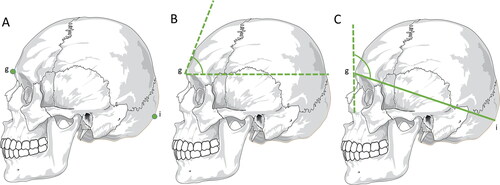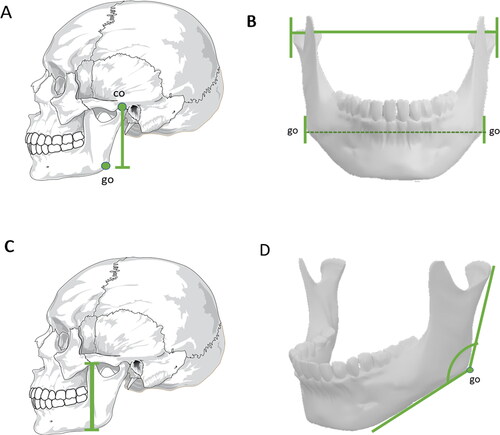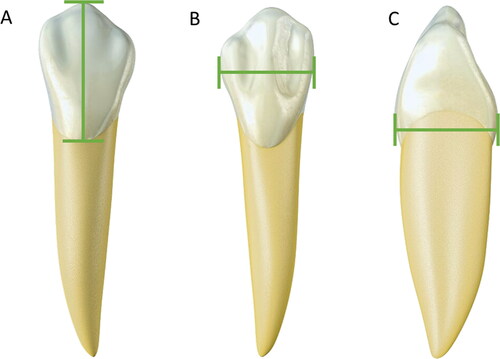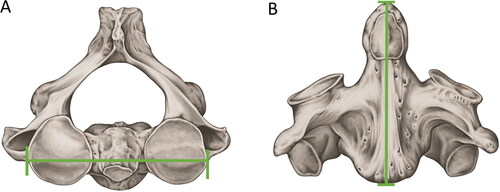Figures & data
Figure 1. Metric analyses with statistical significance in sex estimation — skull. (A) Craniometric points — glabellae (g) and inion (i). (B) Glabellae inclination angle — a line is drawn from the glabellae parallel to the Frankfurt plane and another line tangential to the frontal bone. The resulting angle is smaller in men than in women. (C) Schwalbe’s frontal angle — a horizontal line is drawn connecting the glabellae to the inion and a vertical line tangential to the most prominent point of the frontal bone in the median sagittal plane.

Figure 2. Metric analyses with statistical significance in sex estimation — mandible. (A) Condylion–gonion distance. (B) Bigonial width and bicondylar distance. (C) Mandibular length. (D) Gonial angle. These measurements exhibit greater values in males, whereas the gonial angle is usually smaller in males than in females co: coronion; go: gonion.



